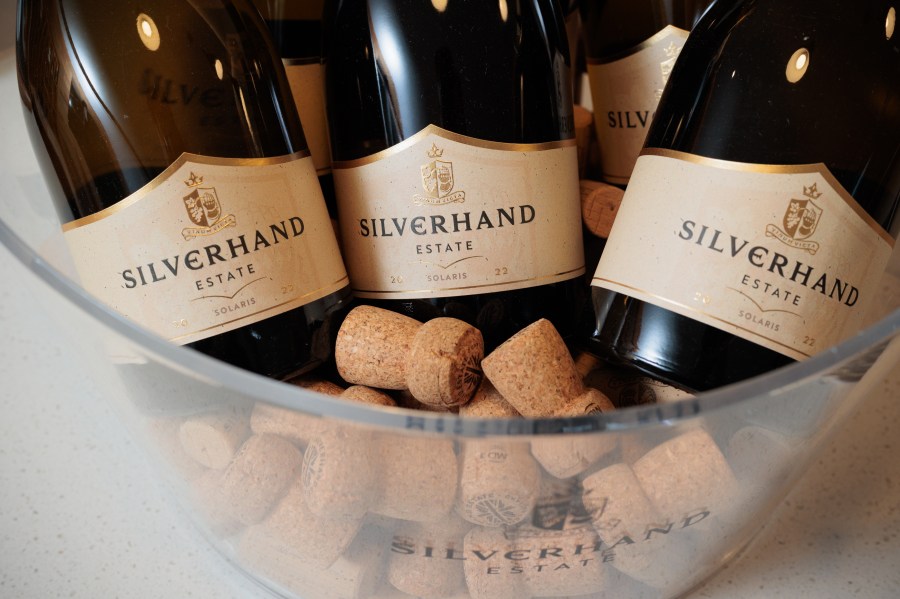The approach to Silverhand Estate in Kent has a welcoming sight of row upon row of vines. The many commuters who take the journey through Kent to central London each day will be familiar with the vines of Silverhand Estate. With 300 hectares of vines Silverhand is the largest single estate organic vineyard in England and Wales.
Silverhand Estate has a fascinating history. It is believed to once have been the home of Bishop Odo of Bayeaux the half brother of William the Conquerer and the man who commissioned possibly the most famous tapestry of all time.
The Grade I listed Luddesdown Court is one of the oldest inhabited buildings in England and takes its name from the ancient King Lud who may have given his name to the City of London. In fact, a statue of the (possibly mythical) pre Roman king dating from around the 14th century (and believed to be among London’s oldest statues) can be found at The Guild Church of St-Dunstan-in-the-West, Fleet Street. Ironically, St Dunstan was Archbishop of London and Canterbury bringing the story back neatly to the trains that daily pass the vines in the heart of Kent carrying visitors to the city of London.
With vines spread across the three counties of Kent, Essex and Sussex, Vineyard operations manager Radu Tanderescu pointed out that the vines behave differently across the sites. “The vines in Sussex are ahead of the vines in Kent for the 2025 season,”
said Radu.
The original vineyard planting was on 1.6m rows and this means that the machinery operators need to be extremely skilled to navigate these narrow rows. Watching the drivers navigating the rows with something less than breathing room between the cab and the posts is fascinating. “The newer plantings utilise a 2.2m system,” explained Radu. “There are several reasons for increasing the row width – there is not so much competition between the vines and the vines get more light, obviously it is also easier for machinery to pass down the rows,” he explained. With so many hectares under vine Silverhand has maximised the use of the latest machinery to aid in the maintenance of the vineyard. A New Holland machine harvester is used on the site in Sussex and two leaf stripping machines are run through the vineyard in Kent after harvest.
“The vines are looking as good as ever,” said Karl Wright Operations Director at MDCV UK. The plans for the vineyard are not static and as more vines reach peak production figures it is important for the tasks to be undertaken as efficiently as possible, for example there are already an unenviable six million cuts made at pruning each year so it is understandable that the vineyard needs to mechanise as much work as is possible.
The Kent site has a, unique in the UK, Vitibot fully electric undervine autonomous robot. “It can work a ten hour shift at the same job before it needs a tea break,” said Radu with a smile. He is however quite serious about the work that the robot undertakes. The constant monotonous job of undervine care of hundereds of acres of vines is not a problem for the vitibot which can work through the night if necessary. Being fully electric the Vitibot is also quiet and reduces the carbon footprint of the vineyard.
At the time of our interview Radu had been involved in frost watch on the vineyard in Kent. “There can be as much as a 3°C variance from the top to the bottom of the valley. The valley can be much lower in temperature than the surrounding area,” said Radu. The vineyard has the latest in weather prediction models utilising Sencrop software “we believe in the technology and we rely on it,” he explained. There are five frost dragons at Silverhand Estate and on nights when frost is predicted these are driven through the vineyard continuously from midnight to 6am. “The site in Sussex makes use of frost fans but these are very noisy and due to the scale of the site in Kent and the surrounding neighbours they are not used here in Kent,” Radu explained.
Silverhand is part of MDCV which also has four vineyard sites in Provence. There is much that is shared across the businesses and Radu explained that the team from the UK had travelled to France in order to train in the art of mechanical harvesting and had also shared ideas as to how to deal with the increase in disease pressure that had occurred during the 2024 season. “Since we are an organic vineyard we do not have the chemistry to play with in terms of sprays,” said Radu.
The vineyard in Kent sits on very chalky soil and Radu pointed out that iron deficiency can be one of the issues that vines suffer from on chalk. Utilising petiole analysis and regular in depth soil testing allows the vineyard team to manage any deficiencies and apply the appropriate remedies such as foliar sprays.
Not all parts of the sites are suitable for harvesting machines and small plots are hand harvested. In Kent the largest of these plots is around 21 hectares in size and Silverhand employ between 60 and 70 staff to accomplish the mammoth task of managing the vineyard. With such a large site and workforce, it is great to see that there is a friendly working environment across the team. This friendly team atmosphere was in evidence at the WineGB pruning competition when Silverhand Sussex and Silverhand Kent teams competed against each other.
With such a large site the vineyard is uniquely placed to trial new ideas. There are seven hectares that are set aside for research and development. Currently this involves the use of straw at the base of the vines which is being trialled in connection with moisture retention, heat retention and weed suppression.
It looks a little unconventional and Radu explained that once the straw was laid it then had to be rearranged a few days later as the birds decided to investigate this new material. In the past hessian matting and wool have also been trialled with soil analysis and petiole testing taking place to measure the impact of each new addition to the vine’s environment. “Of course some of the methods may work well but they also have to be commercially viable at large scale,” said Radu.
Bird predation of the grapes has been a problem at Silverhand and as with many of the issues the site has faced they have approached this systematically. Starlings in particular have been problematic with the early ripening varieties. The estate is currently trialling infrared bird scaring devices. Handheld versions of these devices were trialled during harvest and now the trial has been extended.
The vineyard has also used camera traps to identify other animals that may cause issues such as pheasant and deer. The camera traps have allowed the vineyard team to identify not only the species that may be causing problems but the particular plots of vines that may be susceptible to attack.
“One of the reasons it is important to identify problems correctly is that the entire estate team is keen to work with nature rather than against it,” said Cristina Alves, Conservation Assistant at MDCV UK. Cristina explained that sheep are run through the vineyards during autumn and winter. The sheep breeds are native including Kentish Romney, Hebredian and Jacob.
The estate has many wildlife towers that are out of the public eye, built in keeping with the other listed buildings on the estate and utilising flint from the site. It is encouraging to see a large estate such as Silverhand work so hard at enhancing the environment. There is a unity of thought throughout the team that the business has a responsibility to ensure the environment is improved by its existence. The wildlife towers are designed to encourage species such as owls, bats and kestrels. These species are all valuable to vineyards and Silverhand Estate has worked hard to create spaces, encourage species and enhance the landscape. Silverhand is now part of the North Kent Woods and Downs National Nature Reserve.
Cristina quoted some impressive figures to highlight the range of biodiversity that has been encouraged on the site. “In recent surveys it has been found that 70% of all known species of moth visit the site,” she said with pride and enthusiasm. There are also rare orchids such as the fly orchid and the bee orchid. “We are the first vineyard to be carbon negative with no offsetting,” said Emma Clark, Marketing Director of MDCV UK. This is a fantastic achievement, but Emma explained that the objectives go much deeper than simply a badge, an award or a name “it is not about reaching a target it is about maintaining those values,” she said with emotion in her voice.
This atmosphere of creating a better environment is also reflected in the opportunities Silverhand offers to those who may be interested in working with vines and wines. The vineyard welcomes apprentices, university students, local residents and veterans to work with them “engaging with the local workforce is important,” said Karl. “Driving a local message and encouraging a local product is a central part of our business,” added Emma.
With hundreds of acres under vine the winery at Silverhand Estate is currently able to process 80-120 tonnes of fruit a day. Head Winemaker, Theo Cullen explained that the current winery has 91 tanks, the largest of these are two tanks each of 60,000 litres. With a line that can complete 2,000 bottles an hour and the ability to complete a pallet in 15 minutes it is vital that the winery has a good circular flow. Current capacity is 1.4 million bottles a year. “Every bottle is vegan friendly,” said Theo whose family have been making wine in the Loire Valley for four generations. “We use pea proteins as fining agents,” he explained. This proves that the inclusive feel at Silverhand Estate runs through every aspect of the business and is literally passed on to the customer. “We allow yeast from the vineyard to start the fermentation process and continue slow fermentation at 14°C,” said Theo. The winery processes “involve low sulphur use to preserve the terroir taste,” he continued. Whilst the large tanks for charmat method wines are impressive the winery has so much depth in terms of innovation and imagination. As Theo opened the door of tanks that looked conventional on the outside but inside held a secret he explained: “Silverhand Solaris still wine utilises tanks that are a rugby ball shape inside ensuring the lees naturally sink.”
The innovation and imagination in the winery means that Silverhand are able to offer customers searching for organic wines exactly what they want. In the tasting room Thaya Russell explained how the wines are received by those who visit not only the tasting room but The Lion pub and restaurant that is situated at the heart of the Silverhand Estate.
Tastings at Silverhand are able to offer visitors an in depth look at Sparkling wine. Silver Reign is produced by the tank method and is a blend of 62% Chardonnay, 19% Pinot Noir and 19% Pinot Meunier with 12.5% alcohol and a price point of £17. Thaya explained: “The wine is an easy drinking wine and very popular.” Thaya continued “We also have Silverhand Classic Brut made in the traditional method.” With 60% Chardonnay, 20% Pinot Noir and 20% Pinot Meunier with 5g dosage the wine will spend three years on lees and retails at £29 a bottle. The two wines are very different in flavour profile. With the charmat method wine having the light notes of elderflower and the traditional method having a creaminess and brioche character plus a hint of peach the tasting experience is unique. Sparkling wines can be a bit like potatoes – if you like them you usually have your favourite method of preparation, roasted, fried, boiled, sautéed or mashed, all still potatoes but surprisingly diverse.
The wines shout their differences not just in the taste and mouth feel but also from the names and the labels. Silver Reign proudly declares itself Charmat of England on the label which is a different shape from the Silverhand Traditional Method Classic Brut. There are also still wines produced at Silverhand and the tasting room allows visitors to experience the difference between English Chardonnay and Solaris. “It is interesting for people to be able to compare the two varieties. With a balanced acidity and flavours of stone fruit and tropical aromas, Solaris is the biggest seller in The Lion,” said Thaya.
Tours and tastings are conducted Friday, Saturday and Sunday and “with three to four tours on these days most of the tour slots are full,” said Thaya. Alongside vineyard tours Silverhand Estate also offer events such as a vine and meadow walk. Educational events also feature as part of the schedule with reptiles, moths, butterflies, funghi and insects of the Downs all topics that will be covered across the spring, summer and autumn. “People realise that they can spend the day here, have a vineyard tour or nature experience followed by food at The Lion and take some wine home from the shop and tasting room,” said Thaya.
The wines produced are capable of getting people to talk and think about English wine. Silverhand Estate have created the perfect tool to celebrate the different styles of sparkling wines and the different varieties produced in England. The vineyard incorporates organic skills coupled with a focus on the natural environment and the local community, combining all of this with innovation and new technologies on a site that is one of the oldest in England.
I’m thinking one visit may not be enough!
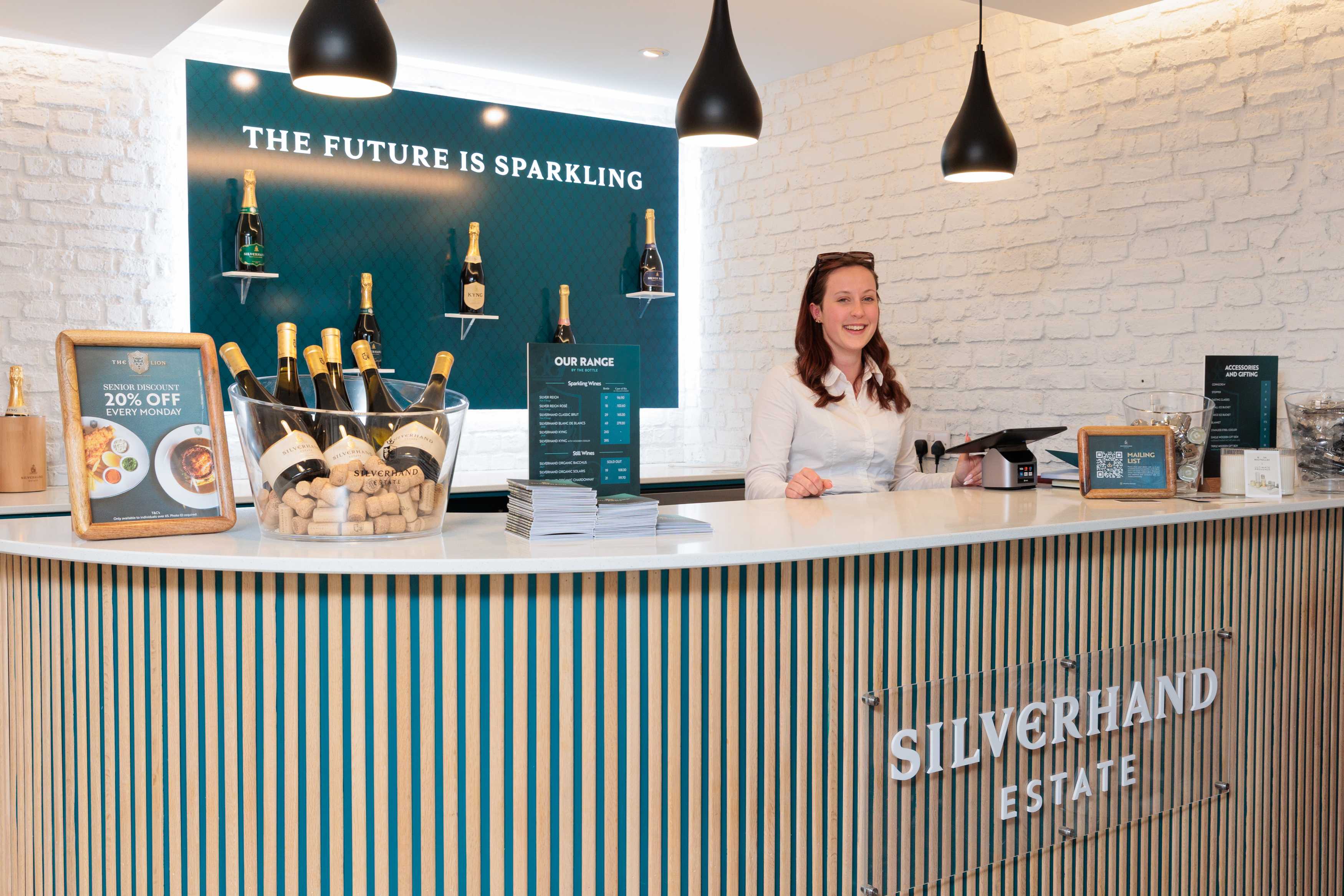
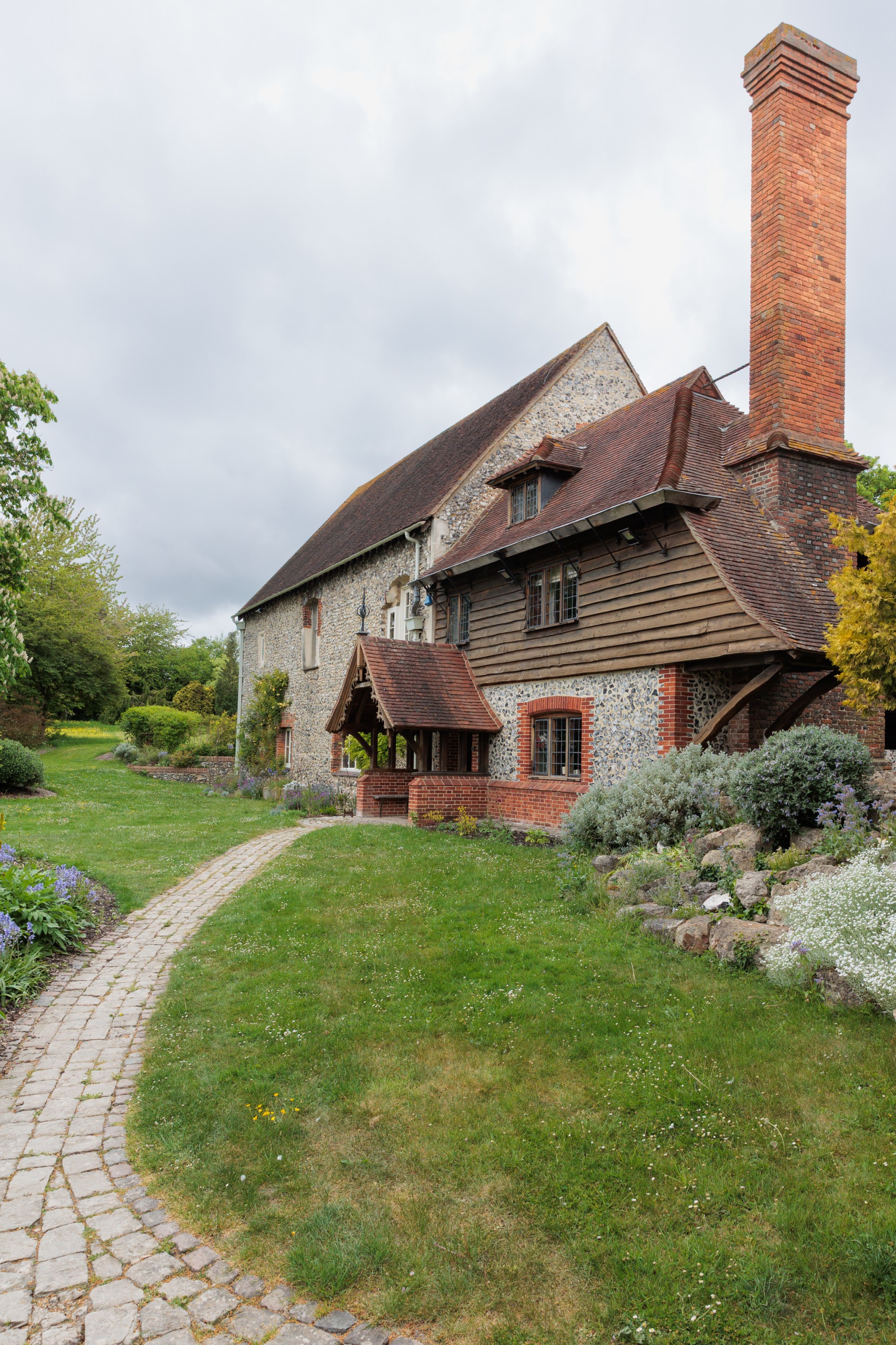
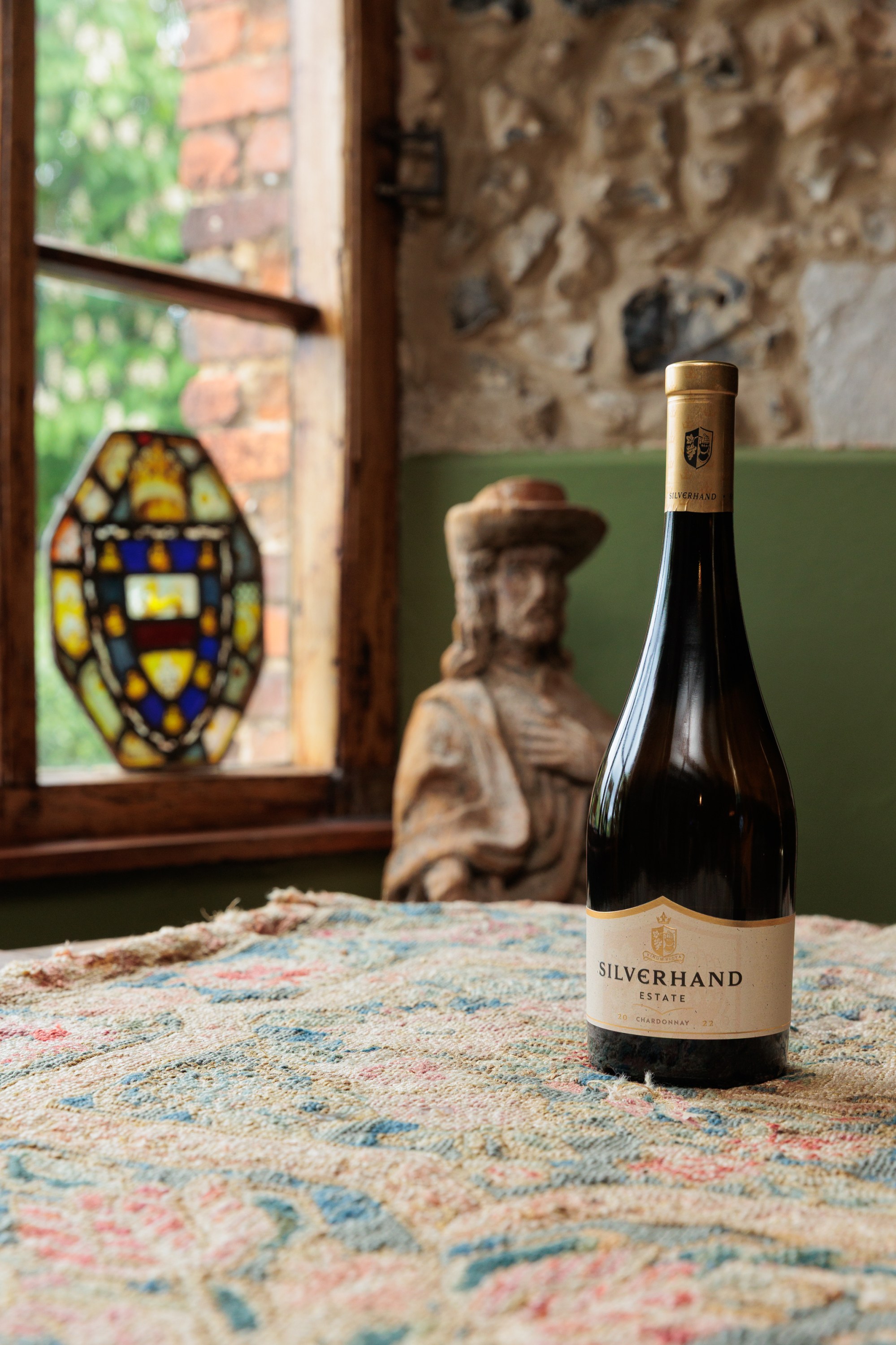
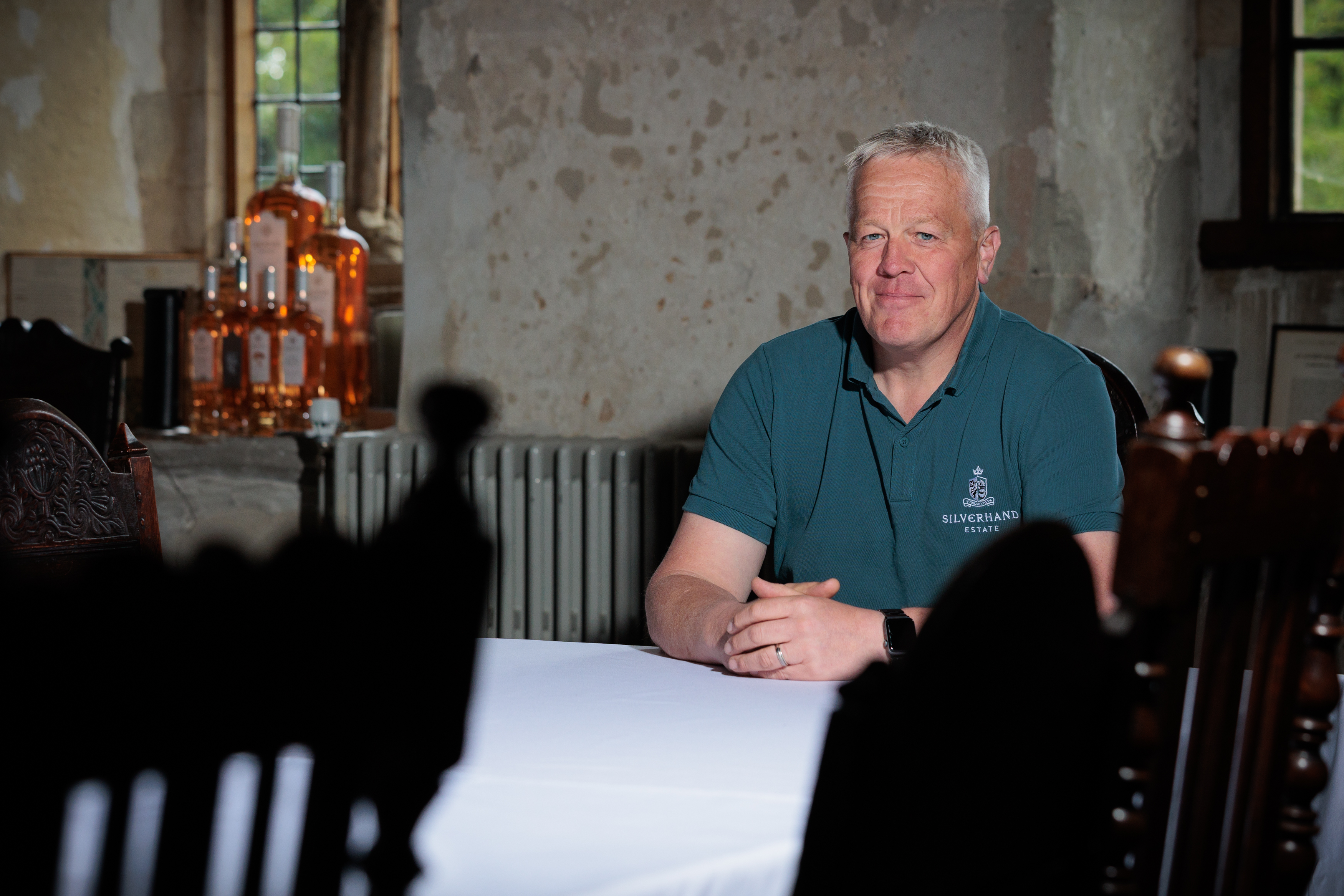
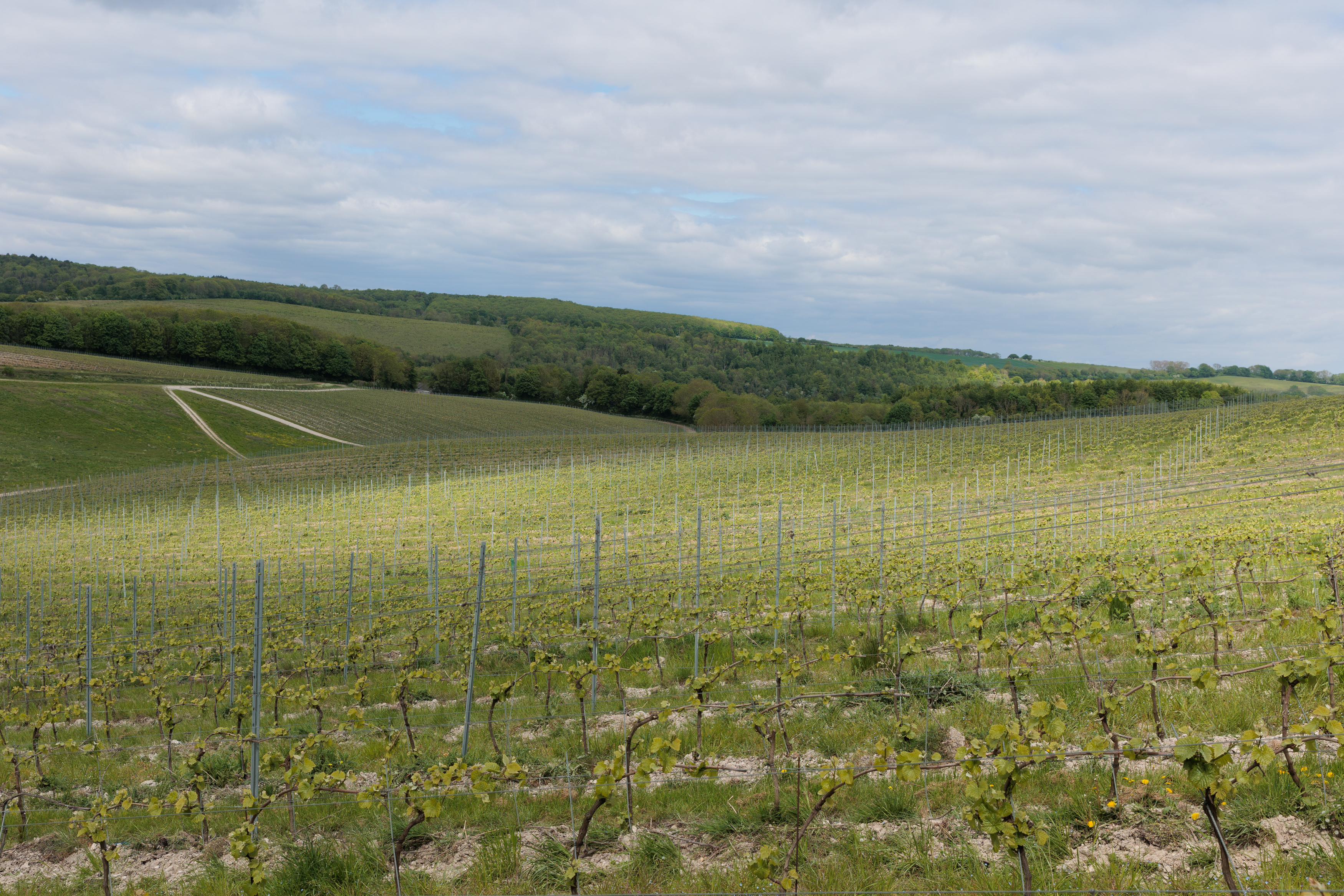



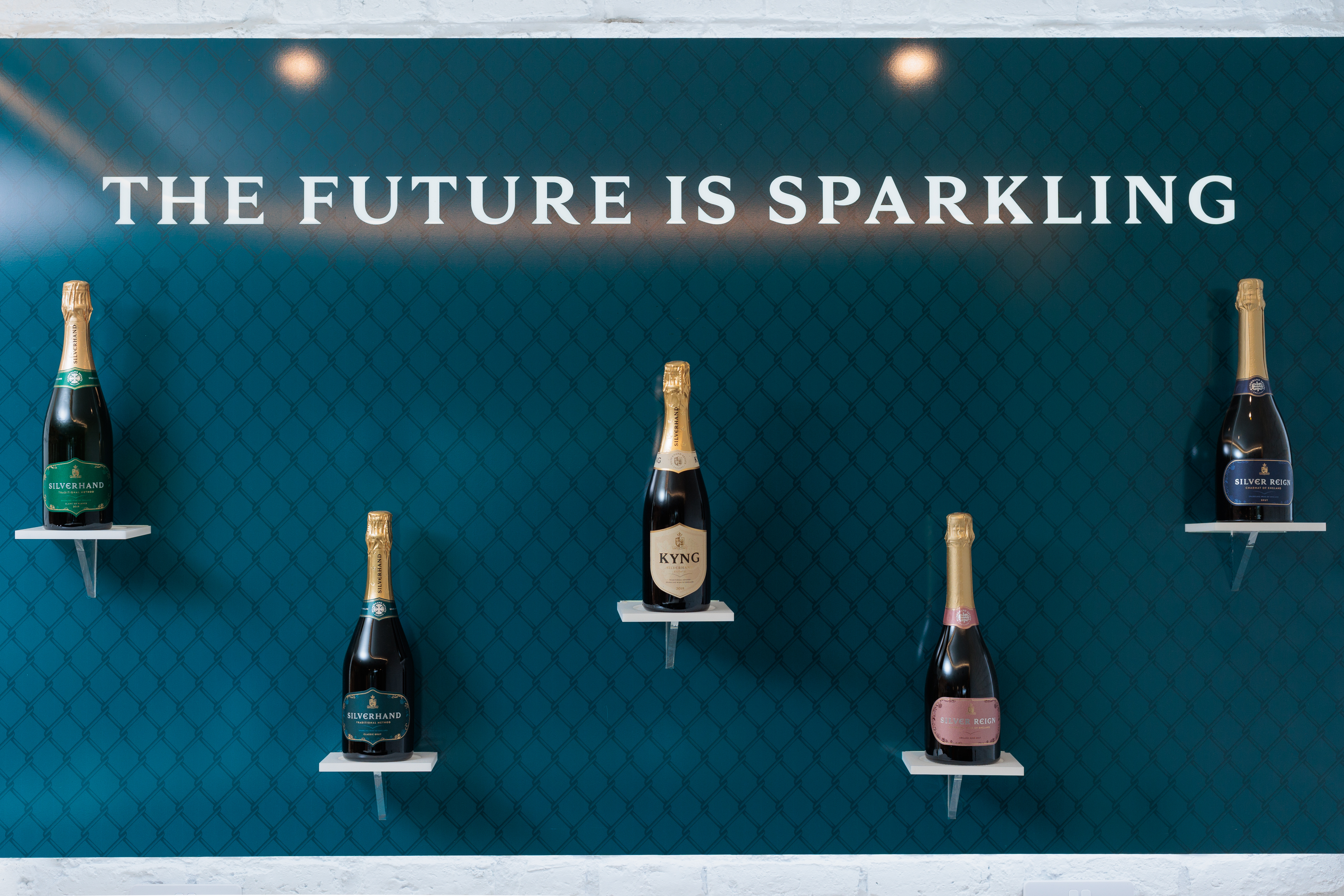
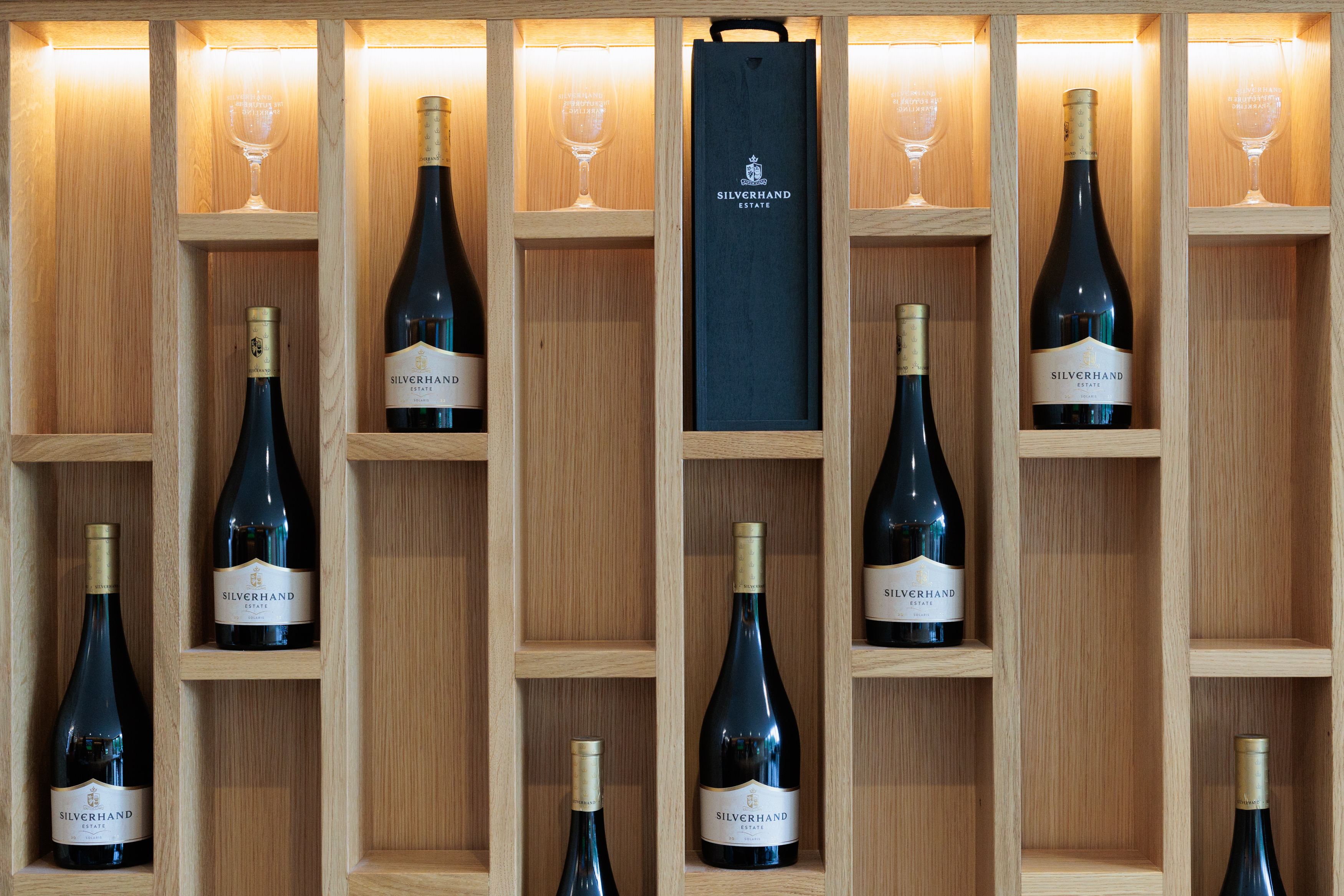
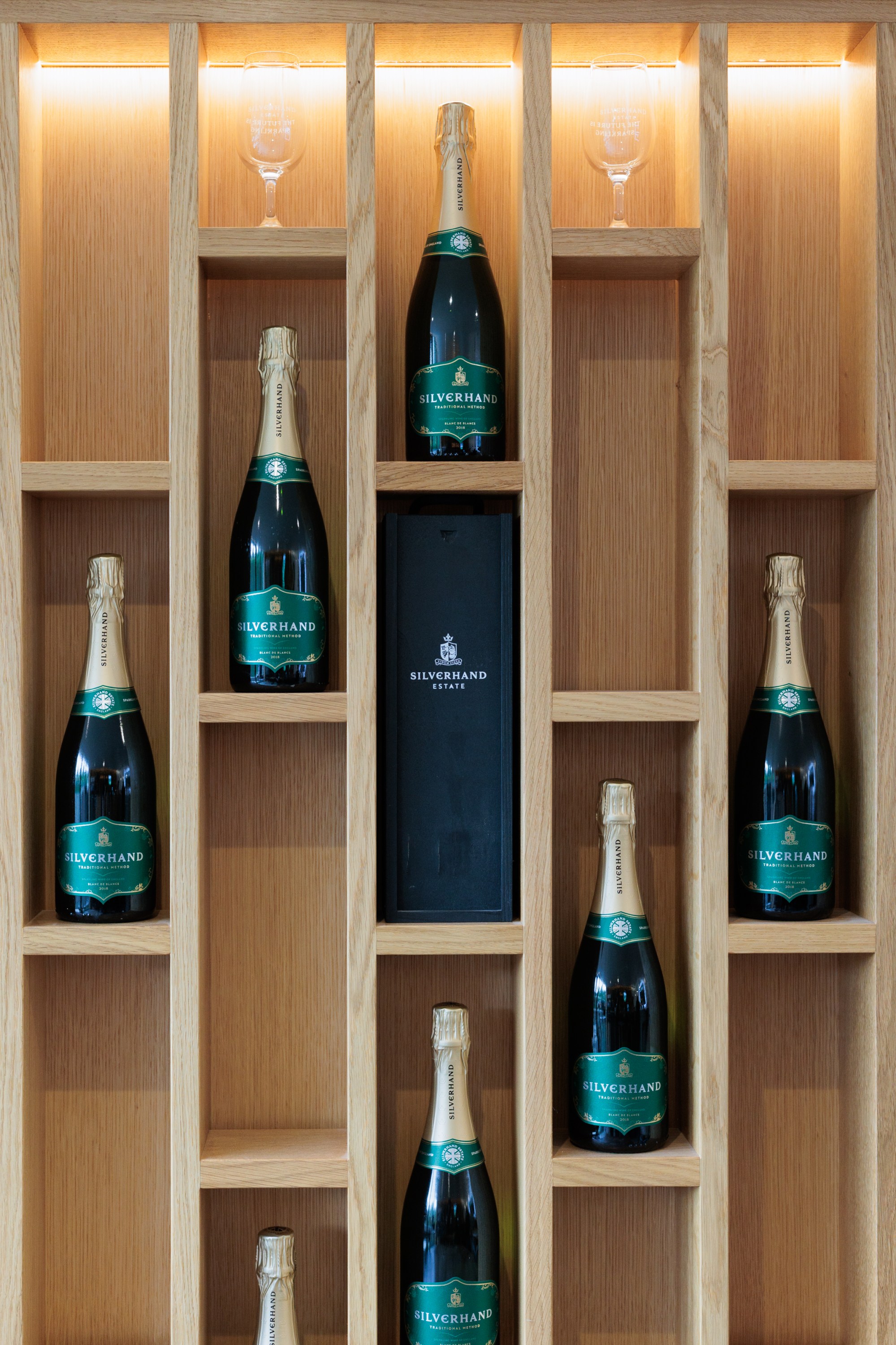
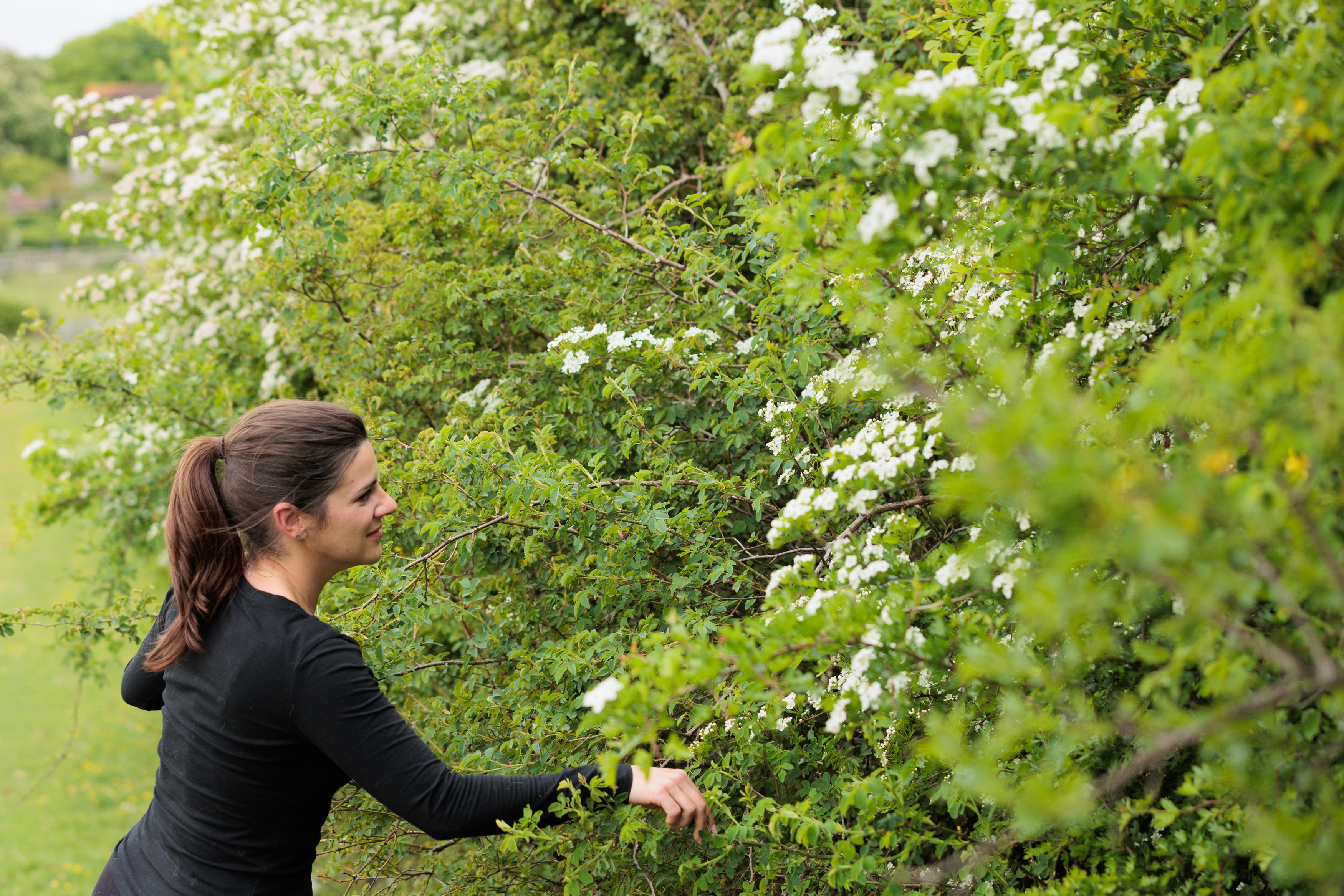
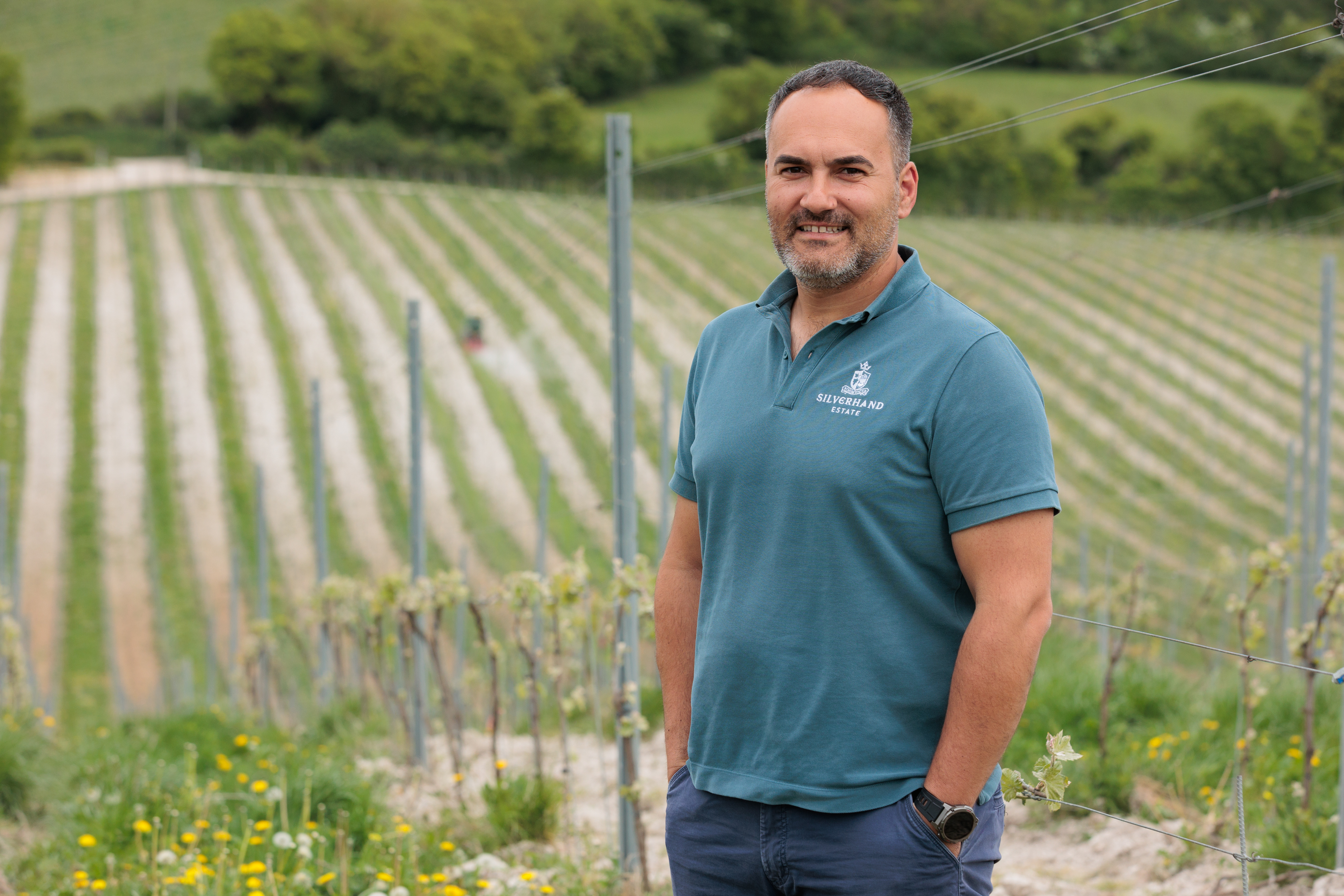
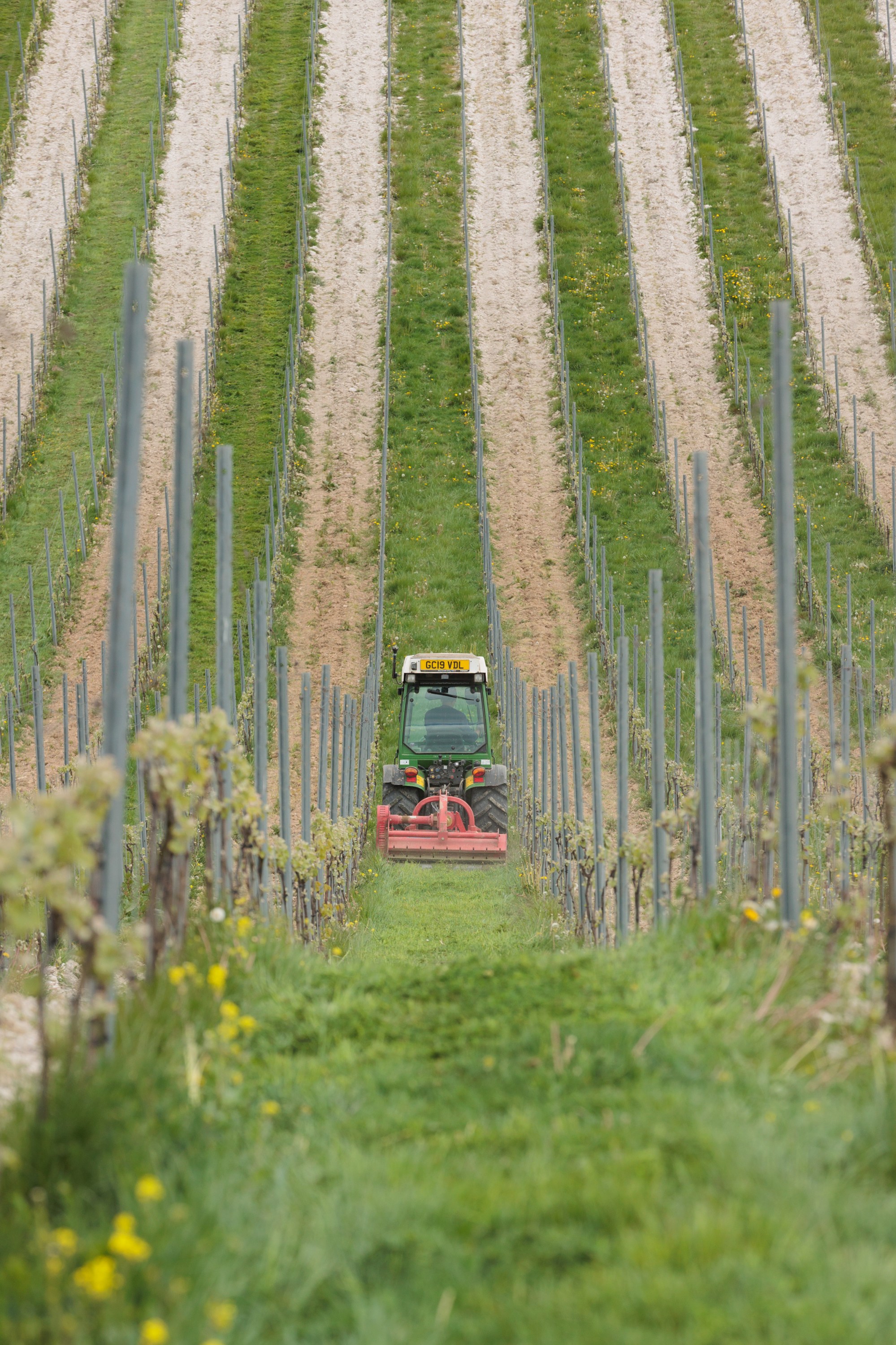
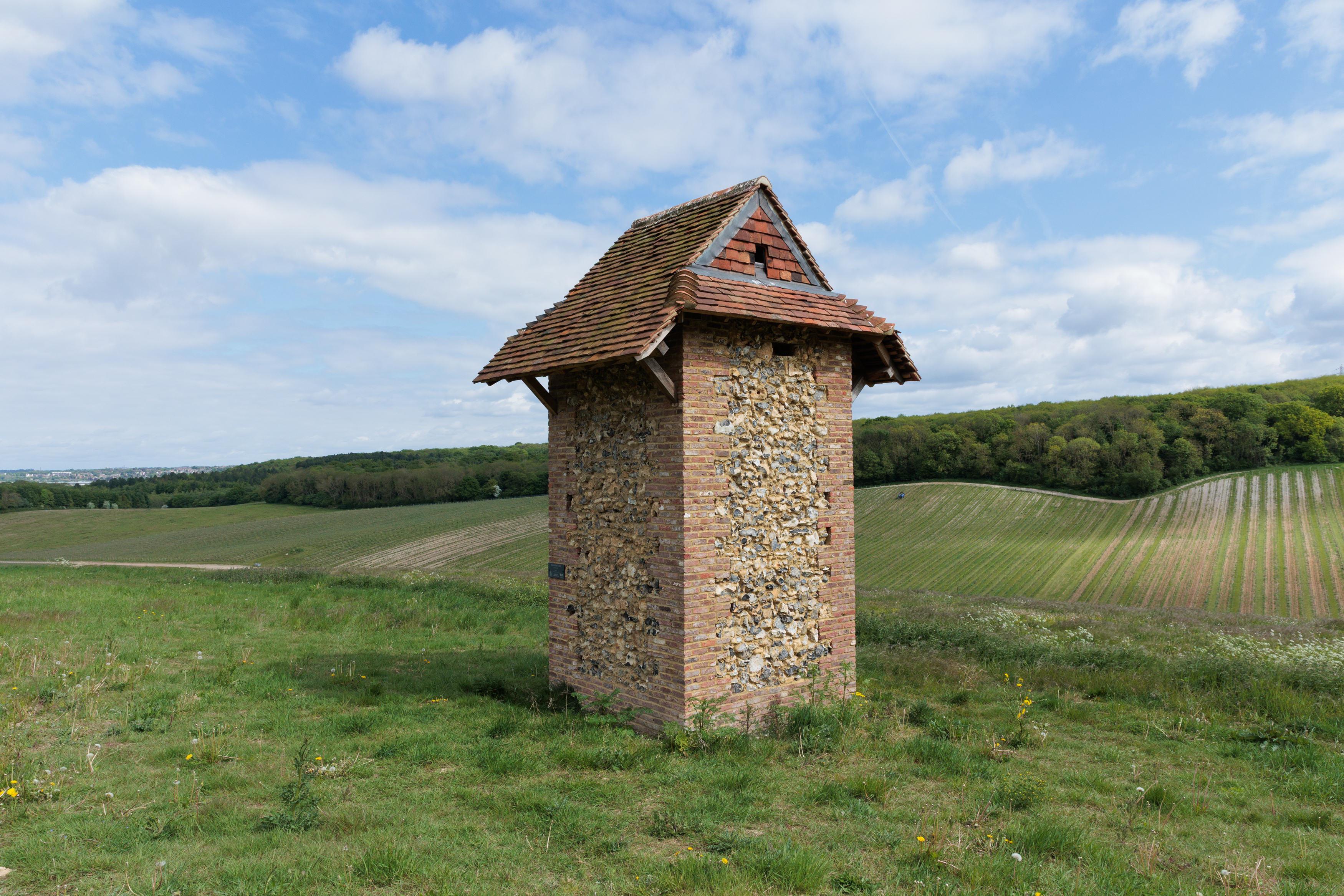
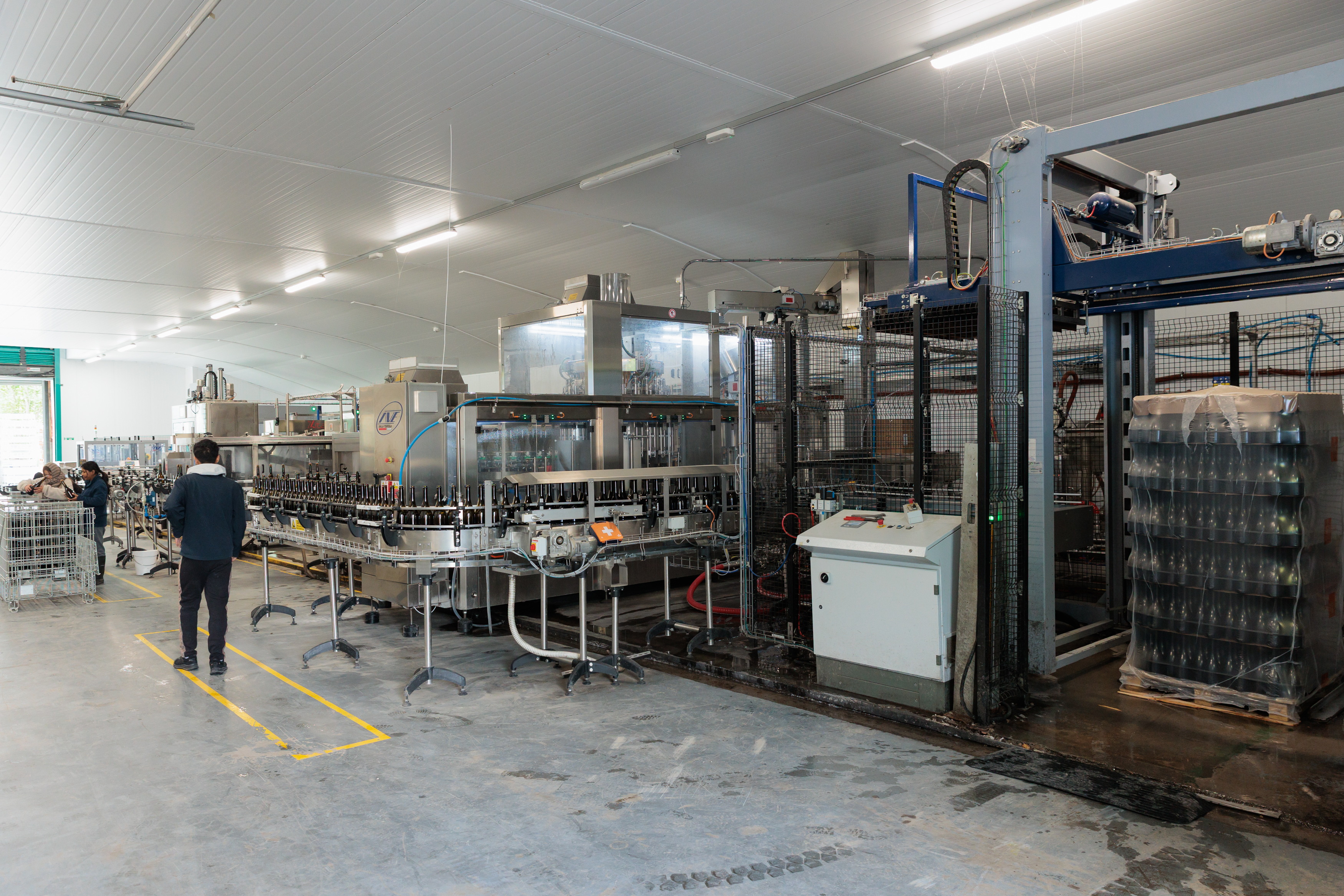


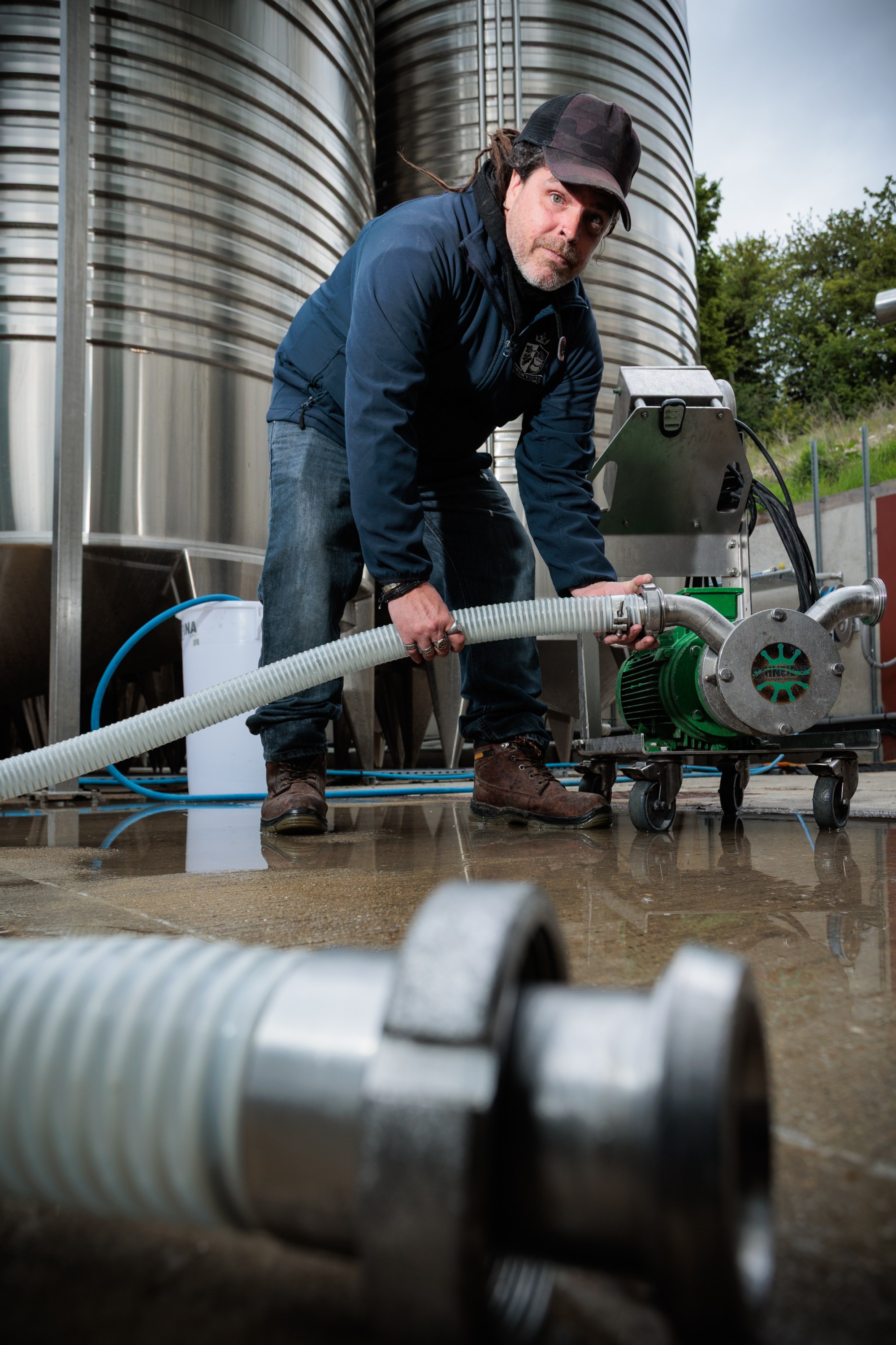
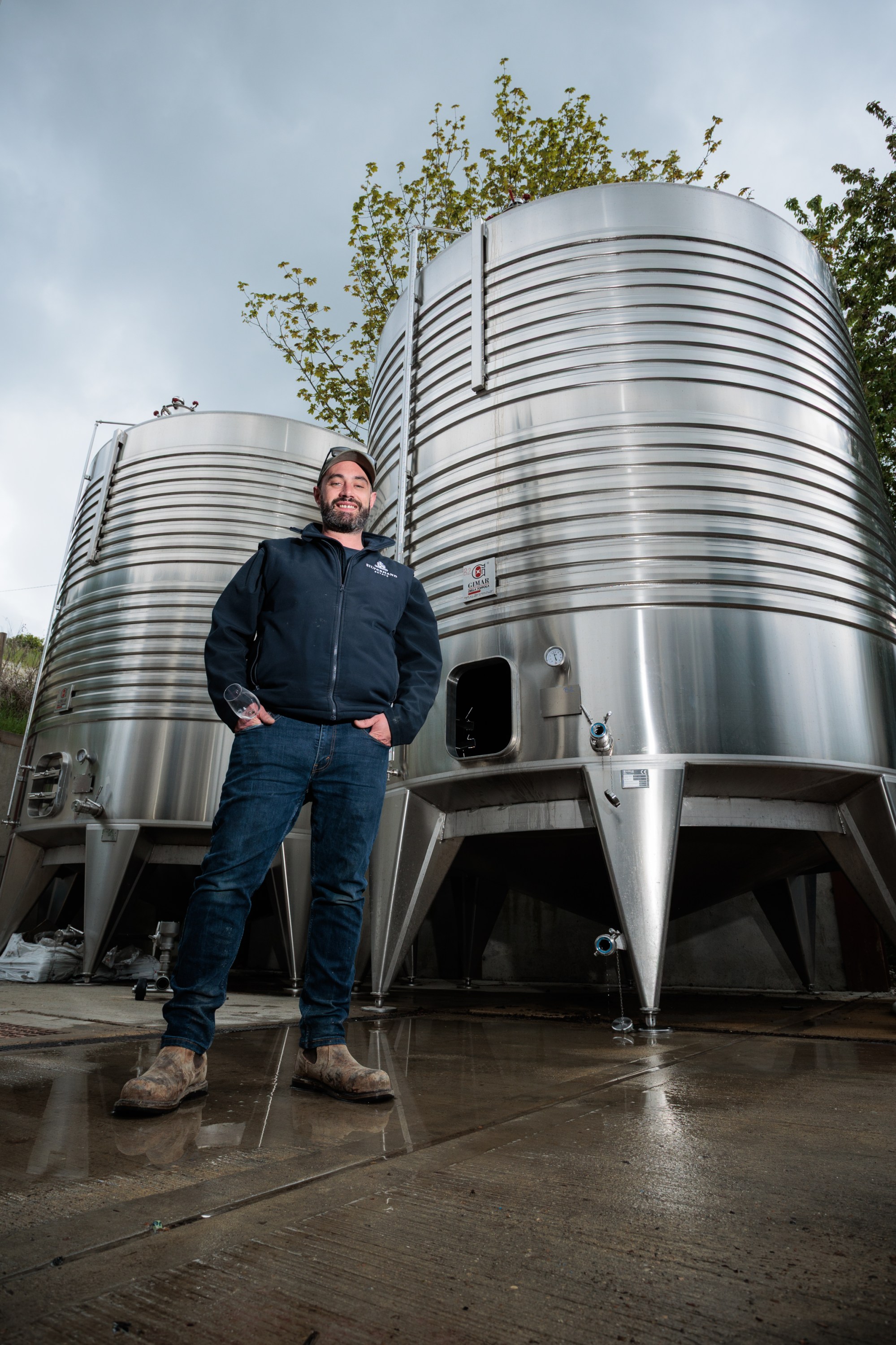
Photos: © Martin Apps, Countrywide Photographic

